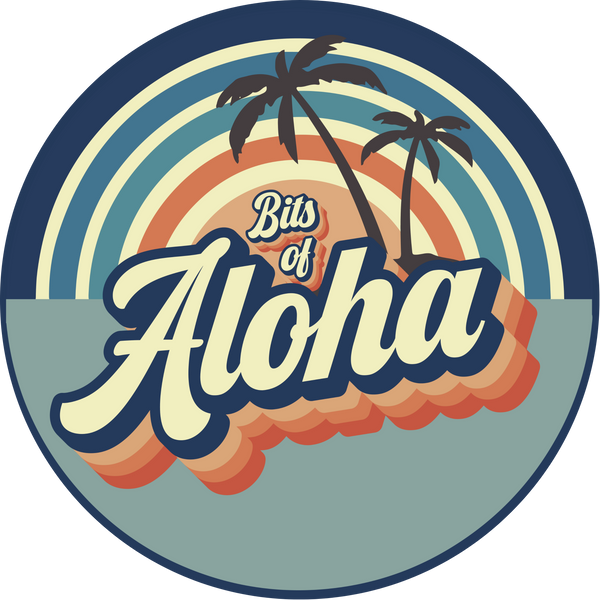
Kailua-Kona: History, Coffee & Modern Hawaiʻi Charm
Share
Kailua-Kona: From Royal Capital to Coffee Hub and Modern Seaside Town
Set against the deep blue waters of Hawaiʻi Island’s leeward coast, Kailua-Kona is more than just a sunny beachside getaway — it is a living testament to Hawaiian history, culture, and resilience. Known today for its relaxed charm, oceanfront dining, and as the beating heart of the world-famous Kona coffee industry, Kailua-Kona has a layered past stretching back centuries.
Let’s explore how this West Hawaiʻi town grew from a royal seat to a coffee powerhouse and into a modern, thriving destination beloved by visitors and locals alike.
Ancient Kailua: Royal Hawaiian Center
Long before Kailua-Kona became a tourist haven, it was a place of great importance to Native Hawaiians. The area known as Kailua was prized for its calm waters, fishing grounds, and strategic location sheltered from the island’s tradewinds.
During the late 1700s, King Kamehameha I, who unified the Hawaiian Islands under a single rule, made Kailua-Kona his residence. The site of Ahuʻena Heiau, a reconstructed traditional temple near Kailua Pier, marks where he governed during his later years. This heiau (sacred place of worship) was one of the most important religious and political centers in the kingdom.
Kailua became a gathering place for aliʻi (chiefs) and a hub for commerce and politics, setting the stage for its later growth as a harbor town.
Missionaries and Merchants Arrive
In the early 1800s, Christian missionaries began arriving in the islands, including Kailua-Kona. They established churches and schools, blending their religious teachings with Western-style education.
One landmark still standing is Mokuaikaua Church, built in 1837 and considered the oldest Christian church in Hawaiʻi. Its coral rock walls and lava stone construction are a testament to both missionary efforts and Native Hawaiian craftsmanship.
During the same period, western merchants recognized the potential of Kona’s calm anchorage. Whaling ships stopped here to resupply, trade, and rest, adding another layer to the town’s growing economy and cultural exchanges.
The Kona Coffee Revolution
While sugar dominated other Hawaiian islands, the upland slopes of Hualālai and Mauna Loa nurtured something truly special: coffee.
In the early 1800s, coffee seedlings were brought to the Kona District by missionaries and enterprising Hawaiian farmers. The region’s rich volcanic soil, combined with sunny mornings and afternoon cloud cover, proved ideal for cultivating what would become Kona coffee — one of the most prized and recognizable coffee varieties in the world.
By the late 19th century, hundreds of small, family-run coffee farms dotted the Kona hillsides. Unlike large sugar plantations, Kona coffee operations were usually modest, often managed by Japanese, Filipino, Portuguese, and Native Hawaiian families working their own plots of land.
Over time, Kona coffee built an international reputation for its smooth, rich flavor, helping shape the economic and cultural identity of Kailua-Kona and its surrounding communities. Annual festivals, like the Kona Coffee Cultural Festival, celebrate this legacy every fall, honoring coffee farmers and their hard-earned craft.
From Fishing Village to Modern Tourism
Through the early 20th century, Kailua-Kona remained a relatively small fishing village with modest commercial trade. But with the advent of commercial air travel in the 1960s and the development of Hawaiʻi tourism, the West Hawaiʻi coastline opened to a global audience.
Kailua-Kona’s location with year-round sunshine and calm seas made it ideal for swimming, snorkeling, and sportfishing. The expansion of Aliʻi Drive and construction of hotels in the 1970s and 80s transformed the sleepy coastal community into a bustling visitor destination.
While tourism grew, the town still managed to hold on to its authentic Hawaiian character. Local fishing families, coffee farmers, and cultural practitioners continued to live and work side by side with the growing tourism trade.
Kailua-Kona Today (2025)
In 2025, Kailua-Kona is a vibrant blend of old and new. Historic landmarks such as Mokuaikaua Church, Huliheʻe Palace (once a vacation home for Hawaiian royalty), and Ahuʻena Heiau provide windows into the town’s storied past.
Meanwhile, modern Kailua-Kona thrives with oceanfront restaurants, farmers markets, boutiques, and a lively pier used for paddling regattas, sportfishing charters, and the world-famous Ironman World Championship triathlon.
Coffee remains central to the town’s identity, with dozens of family-run farms offering tastings, tours, and even hands-on harvesting experiences. Kona coffee shops dot Aliʻi Drive, serving up some of the freshest brews anywhere on the planet.
Kailua-Kona has also embraced sustainability and culture in its modern evolution. Festivals celebrating hula, canoe paddling, Hawaiian language, and local crafts keep community traditions alive.
Top Experiences in Kailua-Kona
If you plan to visit Kailua-Kona, here are a few must-dos:
-
Walk Aliʻi Drive: Check out shops, galleries, and oceanfront dining with epic sunsets.
-
Visit Ahuʻena Heiau: Learn about King Kamehameha I’s legacy at this sacred reconstructed heiau.
-
Tour a coffee farm: Sample world-class Kona coffee directly from local farmers.
-
Explore Huliheʻe Palace: See royal artifacts and experience Hawaiʻi’s monarchy history.
-
Snorkel at Kahaluʻu Beach: Discover a rich marine ecosystem right in town.
Preserving a Legacy
Kailua-Kona’s story is one of resilience, adaptation, and pride. From a royal Hawaiian residence to a vital trading port, from humble fishing village to global tourism hotspot, this town continues to evolve while honoring its deep roots.
The town’s continued commitment to Native Hawaiian cultural practices, alongside its respect for its coffee-growing legacy, means that Kailua-Kona will always be more than just a tropical tourist stop. It is a living, breathing chapter of Hawaiʻi’s story, where every cup of coffee and every sunset stroll echoes the voices of generations who have called this coast home.
